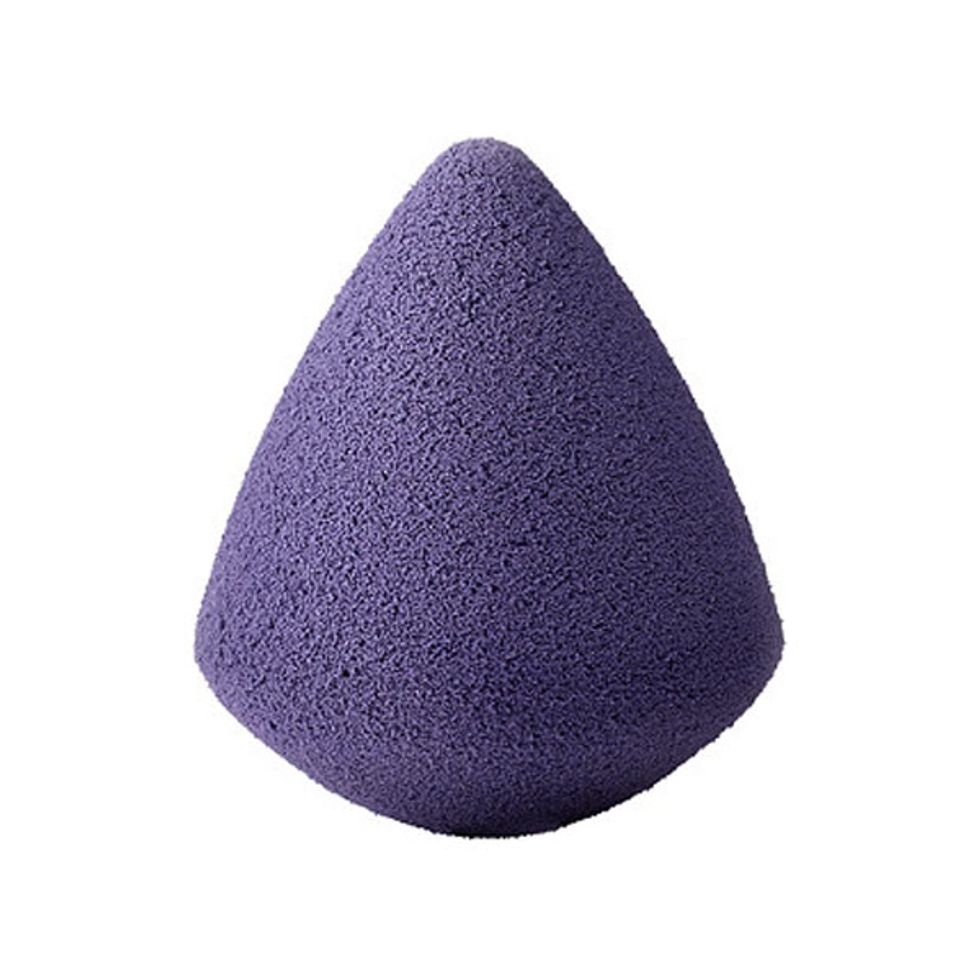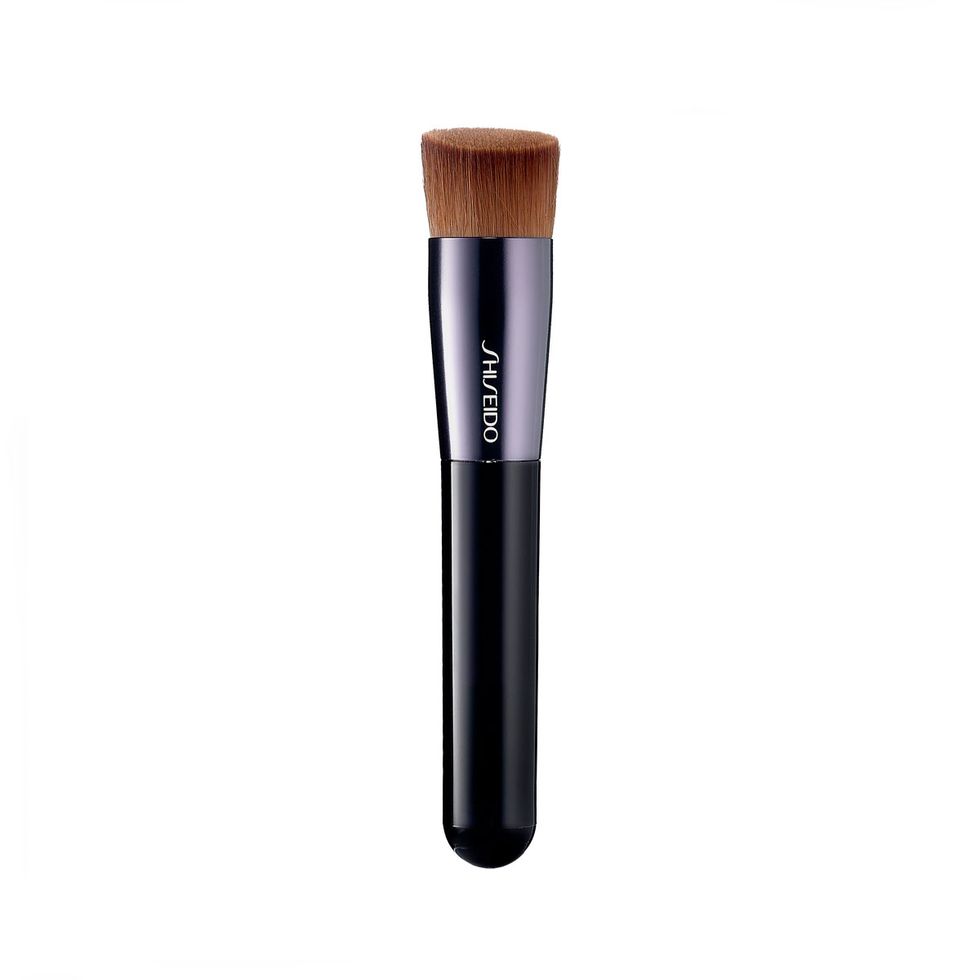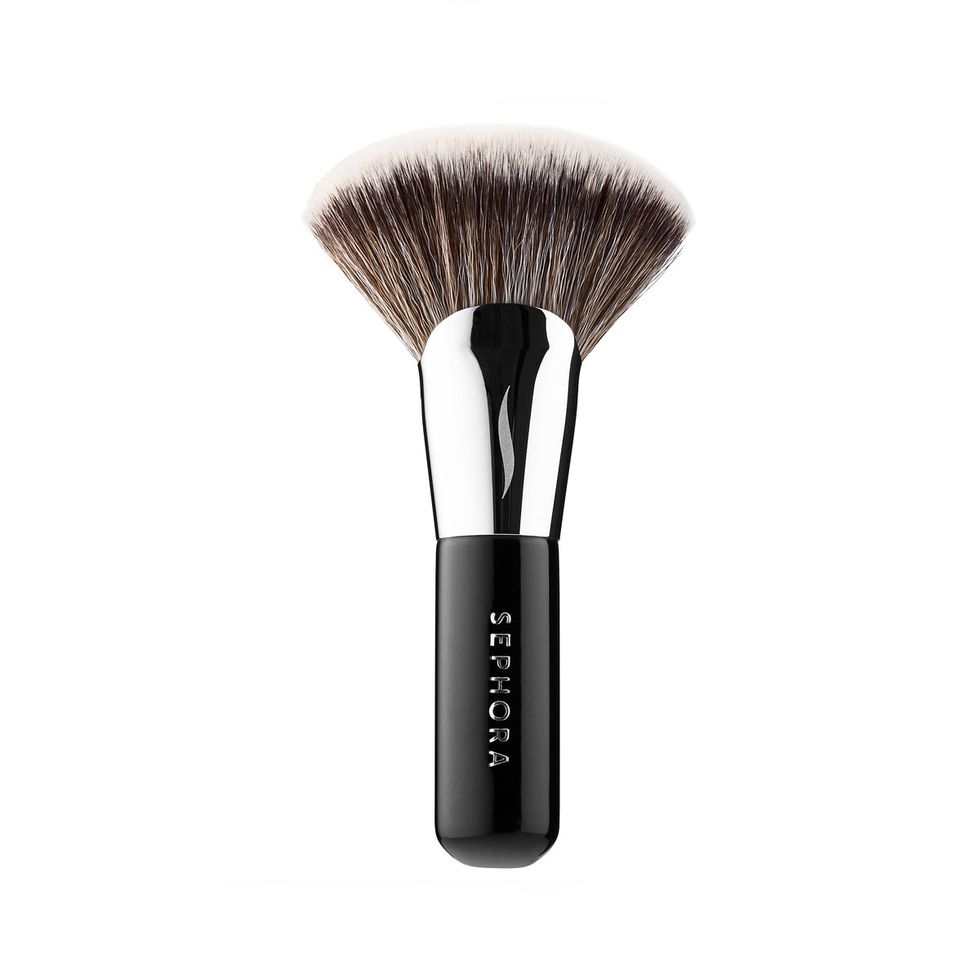How to Apply Liquid Foundation with a Brush
Time to learn. Because we’re breaking out from stress from the holidays/general state of the world.

Ah, winter. The temperature has officially dropped from our beloved leather weather to that at which we need to engulf our whole heads in scarves that double as duvets; any lingering blemish-hiding tan of summer past is long gone; and the wind has officially turned our skin a little more snakeskin than silk. And let’s be real, if this election season and impending presidency hasn’t left you with at least a few hostile breakouts, well, please DM us your secrets. Needless to say, we could all use a hand putting on a good face in the coming months.
Enter foundation: helping us serve looks since our angsty teen acne days. And if we’ve learned anything from our years of overly caked-on, ill-matching cosmetic decisions, it’s that proper coverage is key, and nothing covers quite like cream, liquid, and gel foundation formulas. In an attempt to avoid unwanted oils on our skin—i.e., using our fingers to apply—we turned to Pati Dubroff, blush-wielder for Charlize Theron, Margot Robbie, and Natalie Portman—to name a few—to guide us in the best brushes and techniques for expert cream and liquid foundation application.
Sponges vs. brushes
“In all honesty, I prefer to start foundation with a damp sponge as a first layer, pressed and worked in really well. Then I will go back over [the skin] with foundation brushes to blend, blend, blend! I like to use brushes for application when I want to focus on a detail area, or when I want to use a sheer finish and give a wash over the skin. If the skin is really dry, I only use damp brushes when applying. Generally speaking, sponges can give more coverage, while brushes can be more sheer.”
The best brush sizes and shapes for each part of the face
“I like to use a larger dome-shaped brush when applying a cream foundation to the center of the face. I use a brush that is not as dense, almost like a flat stipple brush, for lighter gel formulas. I use a smaller rounded brush from Smith Cosmetics for blending cream foundations into a sheer wash. I use a flat, broad, rounded brush for blending all over, a smaller dome brush for detail areas, like under the eyes and the sides of the nose, and a very small, flat, tapered brush for concealing spots. The size and shape really matters depending on the formulas used and the area of the face.”
Her favorite foundation brushes
“Make Up For Ever 100 Small Precision Foundation Brush is a great dome brush. Make Up For Ever 108 Large Foundation Brush is [my favorite] large tapered blender. [I use] the Hakuhodo or Utowa foundation brushes as the stipple brushes, and Hakuhodo domed brush for details. [I like the] Laura Mercier Secret Camouflage Brush for concealing, [as well as the] Smith Cosmetics 115 short and rounded brush. IT Cosmetics Heavenly Luxe Dual Airbrush Concealer Brush #2 lives in my personal makeup bag for its ease and softness.”
The rules of pre-foundation prep
“I often use a sheet mask when someone needs a surge of hydration—111SKIN is my go-to—or a lighter gel mask from Sisley when not as much hydration is needed. I will use a rich cream or very light oil on the perimeter of the face, and a mattifying primer or oil-free moisturizer on the center of the face.”
How to apply
“I will place some foundation on the back side of my hand and dab the brush into that, often using more than one shade to give the face dimension and make sure the center of the face matches the neck, and the cheek tone matches the chest and cheek. I prefer to use less [foundation] and keep building, so the brush should not be too saturated.”
Where to start
“I always start from the center of face, the T-zone, and work outwards, using the lighter shades first and then adding the deeper or warmer shades next. I will then go back and focus on the under eye and sides of the nose. The strokes are short and fluttery, and upward and outwards.”
Always clean your foundation brushes
“Foundation brushes are the ones you should clean most often. The fact that they hold on to a moist product makes them more susceptible to bacteria and mold. Washing them every couple of days is crucial. I like to wipe them off on a towel or paper towel after each use to keep them from getting gunked up with product.”










